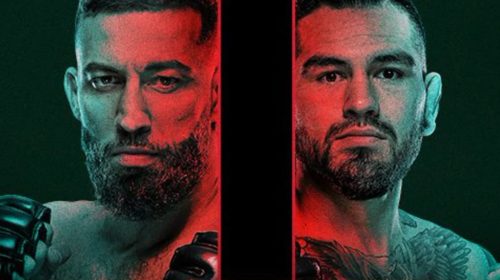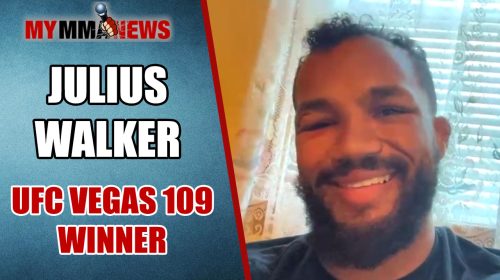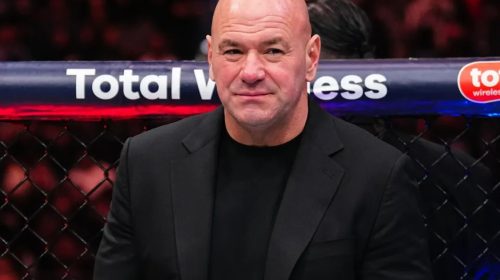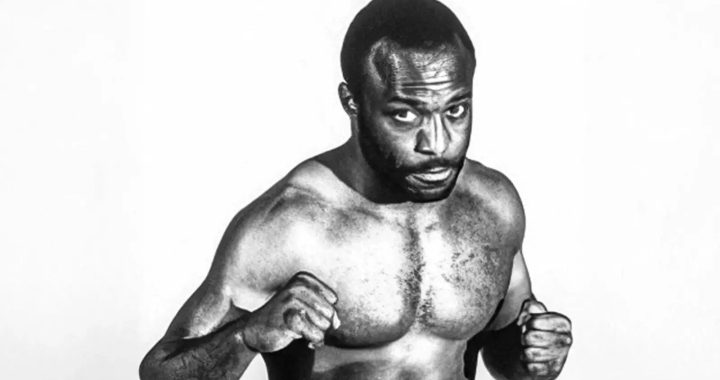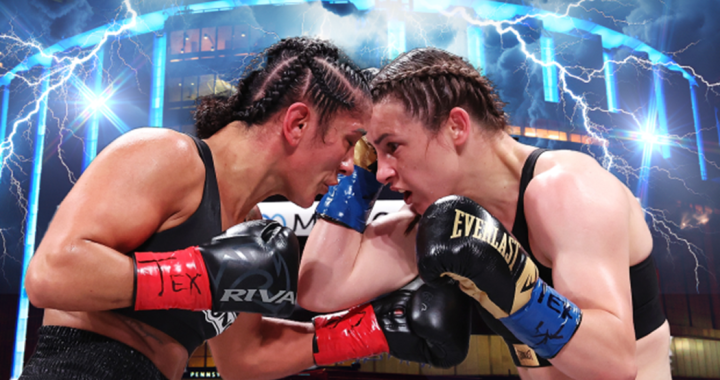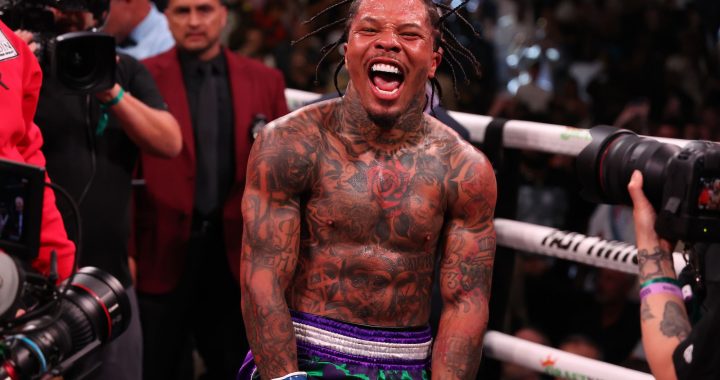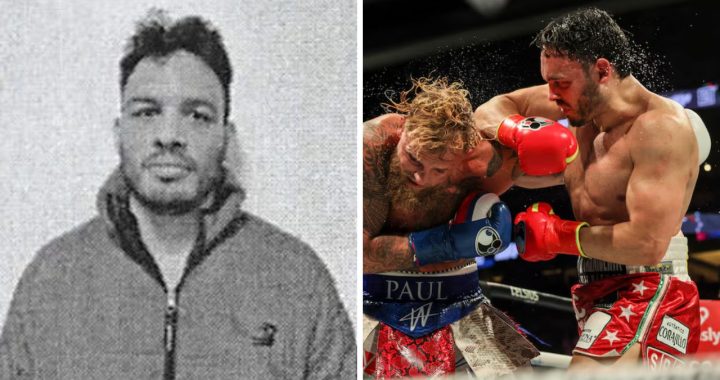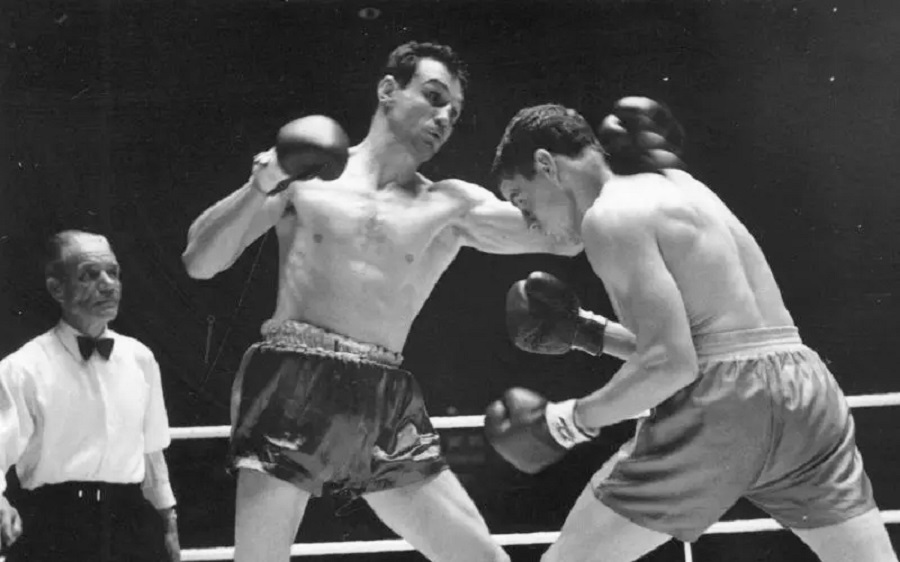
Boxing Across The Nation: Massachusetts – CTE and the Life of Paul Pender
Boxing has been a part of the American sports scene since the 1700s by way of England. It started by infiltrating the larger port towns before eventually working its way into the lexicon of America. Now it showcases some of the most talented combat sports athletes in the world. We will embark on a 50-part saga exploring the best boxers representing the United States. Some states will have more athletes to choose from than others, but the journey will be quite the ride. Let’s embark on the journey looking at an interesting fighter or bout from each state. Next, we look at our 21st entry, the state of Massachusetts.
Check out the 20 states we have covered by clicking below:
Alaska-Hector Camacho vs John Montes Card
Arizona-Hall of Famer Michael Carbajal
Arkansas-The Tragic Story of Sonny Liston
California-The Underappreciated Career of Andre Ward
Colorado-Boxing’s First Mega Star Jack Dempsey
Connecticut-Boxing’s Wins Leader Willie Pep
Delaware-The Night Dave Tiberi Almost Shocked the World
Florida-Pryor vs Arguello Showered In Controversy
Georgia-The Tragic Story of Cleveland “Big Cat” Williams
Hawaii-“The Hawaiian Punch” Brian Viloria
Idaho-The Sad Tale of Ed Sanders
Illinois-“The Drunken Master” Emanuel Augustus
Indiana-The Life and Antics of Kid McCoy
Iowa-Michael Nunn: In the Ring and in the Prison
Kansas-Jess Willard: “Pottawatomie Giant” Lives in Boxing History
Kentucky-Davey Moore: Losing It All In The Ring
Louisiana-Harry Wills: Boxing’s Greatest Injustice
Maine-Liston/Ali II: Putting A State On The Map
Maryland- Joe Gans: First 20th Century African American Champion
Massachusetts
Massachusetts, the sixth state to join the Union, is 16th out of 50 states in population ranking. Home to the Greater Boston area, which is the 10th largest metropolitan area in the nation, the state is known for it’s championship pedigree. With teams like the New England Patriots, Boston Celtics, and New England Patriots, the state’s fanbase is used to seeing top-notch talent. So it should come as no surprise that some of the greatest boxers and boxing minds come from the state of Massachusetts. One of the greatest heavyweights of all time, Rocky Marciano, and training icon Freddie Roach are just a couple of examples of the state’s fine examples of boxing pedigree. One of the forgotten stars of Massachusetts’ long boxing history is that of the man who defeated “Sugar” Ray Robinson TWICE. That man is Paul Pender.
Early Life
On Friday, June 20, 1930, Paul Pender was born in Brookline, Massachusetts. Brookline is a suburb of Boston with a 2020 census population just over 63,000. In 1949 Pender graduated from Brookline High School with aspirations of playing college football. He was offered to play at both Michigan State and Penn State University. Pender decided to stay home in Brookline and attended Staley School in order to become a professional boxer. Before turning pro at the age of 18, Pender had captured the New England welterweight championship. He would eventually joining the US Marine Corps and get a job as a firemen at his local fire station in Boston.
Early Professional Days
Pender’s debut came at the age of 18 on January 28, 1949, in which he earned a first-round knockout against Paul Williams. Over the next 10 years Pender would tally a record of 33-5-2. In August 1959, Pender would battle Jackson Brown for the New England middleweight championship. He came out of the gate strong in his “rookie” year earning a record of 11-0-1 in his first year as a professional. Showing his toughness, Pender broke his third metacarpal in his right hand in his contest with Leon Brown in March 1950. Over the next eight months (seven bouts) Pender fought through the pain of a broken hand to win all of those contests. Still with immense pain in his hand, Pender went 2-4-1 from December 1950 to March 1952. After his loss to Jimmy Beau, Pender quit boxing due to the pain and joined the US Marine Corps.
Due to the Marines also being unable to find the reason of Pender’s hand pain, he dropped out and returned to work in Brookline. After meeting with a team physician from the Boston Red Sox, Pender was able to have surgery to remove the chipped bone from his hand. With two and a half years passing since he last entered the ring, Pender defeated Larry Villeneuve by unanimous decision in August 1954. Winning three in a row after his return, Pender suffered another setback losing a decision to Gene Fullmer. Half way through the ten-round battle, Pender broke both of his hands.
Injury Revelation And Defeating A Legend
Pender took a 10 month hiatus away from the ring while he took a small retirement. After discovering he had a serious calcium deficiency in his hands, Doctor Nathan Shapiro orchestrated a diet and a series of hand injections to aid in Pender’s recovery. Pender looked rejuvenated, going on a winning streak and eventually capturing the New England middleweight championship from Jackson Brown in August 1959. The highlight to his in-ring career would come in 1960 when he defeated the man many regard as the greatest of all time, Sugar Ray Robinson, not once but twice in the same year.
First Matchup With The GOAT
Heading into his first matchup with Robinson, the National Boxing Association stripped Robinson of the middleweight championship for failing to defend against their #1-contender, Carmen Basilio. In order to fill that vacancy, Fullmer and Basilio met to crown the NBA champion with Fullmer coming out victorious. Still recognized as The Ring and the NYSAC middleweight champion, Robinson was scheduled to meet Pender at the Boston Garden. Sam Silverman, who was Pender’s promoter, convinced Robinson that Pender should be the local talent chosen to defend his title against. Pender was on a nice run but did not look to be in the ballpark of Robinson.
Pender entered the Boston Garden in front of a crowd of 10,000-plus as the 5-to-1 underdog against the champion who at the time had a running record of 143-6-2. Over the course of the 15 rounds of action, Pender used the left jab to earn the split decision and capture the disputed middleweight championship of the world.
In an interview for the book, “In This Corner,” Pender never shied away from his point that Robinson was not as good as everyone thought. “Robinson was not a great boxer. I tell people that, and they look at me like I’m positively insane. ‘The great Ray Robinson!’ He wasn’t a great boxer. He was the greatest puncher that ever lived, with a repertoire of punches that nobody could throw. He was fast with his hands, fast afoot. That’s all. I hit him with left jabs, which he never had in his life. But Ray Robinson had the greatest repertoire of punches of any fighter that ever lived. But boxing ability, he couldn’t shine Willie Pep’s shoes as far as pure boxing ability.”
Rematch With Robinson And End Of Career
Heading into his rematch and title defense with Robinson, Pender stuck to the game plan from his first matchup and again defeated the legendary middleweight. This time in the Boston Garden in front of 8,000-plus fans, Pender would again earn a split decision. Pender was much more of a crowd favorite heading into this matchup. The lone judge to select Robinson as the winner was referee Jim McCarron. An Associated Press newspaper (The Leader-Post Regina) based out of Canada reported Pender was methodical in his game plan, starting slow but becoming more controlling in the middle and late rounds.
Pender would move on to 24-year-old title contender Terry Downes. The first of their trilogy of fights happened on January 14, 1961. These would be three of Pender’s last four fights in his career. Pender caused a cut over the eye of Downes which bled so much it led to the eventually stoppage of the contest in round seven.
Three months later, Pender would enter the ring to defend his title against future hall of famer Carmen Basilio. By this point in his career Basilio was a multi-time Fighter of the Year and had earned The Ring’s Fight of the Year from 1955-1959. Again in the Boston Garden, Pender earned the victory, but this time unanimously over Basilio. Pender floored Basilio both in the 13th and 15th rounds, aiding in his world title defense.
Final Two Bouts With Downes Before Retirement
After his title defense against Basilio, Pender entered the ring in July 1961 to defend his title again against Downes. This time, the fight took place on Downes home-turf of England in Empire Pool at Wembley Stadium in London. Downes returned the favor this time opening big cuts over both of Pender’s eyes, the biggest coming in the eighth round. Due to the severity of the cut, Pender’s corner called for a stop in the action in the ninth round, declaring Downes the new middleweight champion of the world.
On April 07, 1962, Downes was set to defend his title against Pender, but this time the matchup was back at the Boston Garden. Using his jab and hooks late in the contest to earn those late rounds, Pender walked out with the unanimous decision win and the middleweight championship. Pender decided it was best for him to walk away from the sport at this time, retiring a world champion. In a November 2017 interview with The Ring Magazine, Downes stated Pender had the best defense of any fighter he had faced in his career.
Pender’s Death And Post-Life Contribution To Sports Research
On January 12, 2003, Pender passed away in Bedford, Massachusetts from Alzheimer’s Disease. Pender’s wife, Rose, donated her late husband’s brain to science hoping to find answers as to why at around the age of 50, Pender started to spiral. Dr. Ann McKee examined Pender’s brain giving us our first “patient zero” in the brain study of boxers, which was documented in the book “Damage: The Untold Story of Brain Trauma in Boxing” by Tris Dixon. . It was discovered Pender suffered from CTE (chronic traumatic encephalopathy), caused by the accumulation of strikes to the head. McKee stated it was the most dramatic case of CTE she had ever seen. Eventually, Pender’s case led to more research looking into the long-term effects of CTE on athletes.
